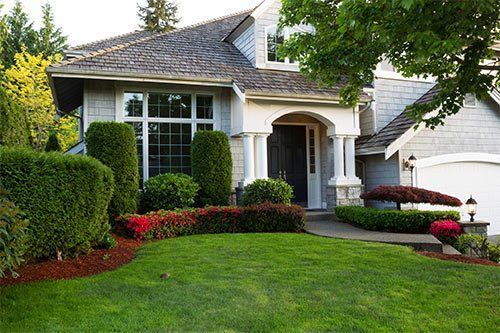
You may have heard that trees can be bad for a septic system, but what other plants and landscape elements can cause problems? Here's a list to help you avoid inadvertently causing leach field problems.
Trees and Bushes. Yes, you should avoid planting any trees, even small ones, in the area around your septic system or any water-containing pipes or drains. In fact, you need to keep the trees quite far back from the edge of the septic system, at least as far as you expect the tree to grow tall (so at least 50 feet for a tree that will be 50 feet tall at maturity).
Like trees, woody bushes can have aggressive roots. This is especially true of larger bushes and bushes that need lots of water. Keep these well away from your leach field as well.
Edible Plants. Edible plants won't necessarily harm your septic system just because they're edible. However, if there's any chance someone will be eating them, you must keep these plants at least ten feet from all septic components.
There's always a risk of leaks, and soil in the leach field is used to filter out contaminants from your wastewater on a daily basis, so it tends to become full of contaminants itself. You don't want this affecting your edible plants.
Expensive Plants. You don't want to be all torn up when you have to tear up the landscaping to get to the septic tank for repairs. Landscaping above a septic system should typically be quite basic, with no rare plants that would cost a lot of money to replace.
Water-Loving or Water-Intolerant Plants. Not only are water-seeking roots bad for your septic system, but they may not fare well in drought. You're not supposed to water the soil above your leach field for fear of saturating it. So the plants you choose will need to be able to survive with only the water they get from underneath.
On the other hand, if you choose desert plants, which are often quick to rot in the presence of water, you could have a problem when they all die off during the rainy season. Instead, choose plants with moderate-tolow water requirements that are adaptable and resistant to fungal problems.
High-Maintenance Plants. The reason high-maintenance plants aren't great for your septic leach field is that your leach field needs well-aerated soil. So a septic system owner should try to avoid doing things that might compress the soil. If your plants are going to need a lot of weeding, deadheading, spraying, hand-pollinating, and so forth, try placing them in a different section of your yard.
Landscape Fabric, Plastic Mulch, and Fill Material
Landscape fabric may seem like an easy alternative to planting on the septic field or mound. After all, you have to be quite picky about which plants you use, and you're not supposed to water them or spend much time caring for them. But landscape fabric can actually reduce evaporation, whereas plants such as grass help to distribute water through transpiration.
Plastic mulch is a no-no as well; it's not breathable at all, so it blocks evaporation. And fill material can have a similar effect, while adding weight to the leach field. Avoiding these items is best.
Garden Sheds or Gazebos
Positioning structures, even small ones, above the leach field is problematic in several ways. The floor of the structure physically blocks evaporation, and the structure's weight compresses the leach field soil. In addition, placing a structure there will encourage foot traffic over the leach field, and that would not be good for it.
This list will help you avoid placing problematic plants or other landscaping elements over your septic system. If you're wondering what you can put there, grass is one of the best options, especially native grass. For more advice on septic maintenance, feel free to call Upstate Septic Tank, LLC, and discuss our septic maintenance and cleaning services.






